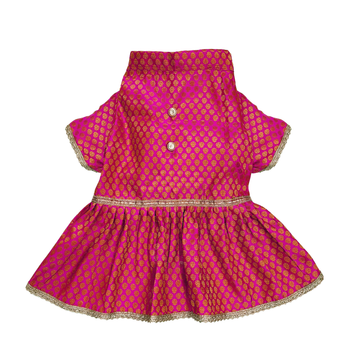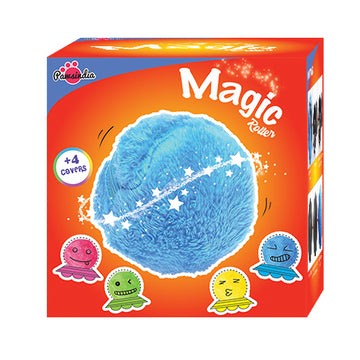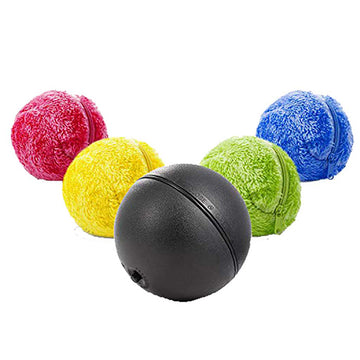Dachshund

Dachshund
| Breed Highlight: |
|
The famously long, low silhouette, ever-alert expression, and bold, vivacious personality of the Dachshund have made him a superstar of the canine kingdom. Bred to be an independent hunter of dangerous prey, they can be brave to the point of rashness, and a bit stubborn, but their endearing nature and unique look has won millions of hearts the world over. |
| Weight: |
|
7.5 – 14.5 kgs |
| Height: |
|
33 – 37 cm |
| Life Expectancy: |
| 12-15 years |
| Litter Size: |
| 1-6 Puppies. |
| Breed Appearance: |
|
Dachshunds come in two sizes and in three coat types of various colours and patterns. The word 'icon' is terribly overworked, but the Dachshund with his unmistakable long-backed body, little legs, and big personality is truly an icon of purebred dogdom. Dachshunds can be standard-sized (usually 16 to 32 pounds) or miniature (11 pounds or under), and come in one of three coat types: smooth, wirehaired, or longhaired. Dachshunds aren't built for distance running, leaping, or strenuous swimming, but otherwise, these tireless hounds are game for anything. Smart and vigilant, with a big-dog bark, they make fine watchdogs. |
| History: |
|
Don't be fooled by this friendly face and little frame: The dachshund has long been a ferocious hunter. This hunting hound first appeared some 600 years ago in Germany. The breed's long, slender body coupled with a clever and courageous personality made her a formidable opponent for badgers, foxes, and hares. According to some authorities on the breed, packs of larger Dachshunds were even used to hunt wild boar. The dachshund began its transition to a household pet in the 1800s. No longer fighting badgers to the death, this version of the breed became smaller in stature but their large personalities remained. The spunky dachshund quickly won over the hearts of the people, including royalty such as Queen Victoria. The breed made its debut in America at the end of the 19th century and quickly became a household favourite. Their popularity declined during the world wars (they were frequently seen as a direct representation of Germany) but resurged in the 1950s and have comfortably been a fan favourite ever since. Though mostly kept as pets in the U.S., dachshunds are still used to hunt in Europe. |
| Originally: |
|
The name ‘Dachshund’ literally means ‘Badger Hound’ in German, which is no coincidence. This dog was originally bred from a Pointer and a Pinscher to help keep the badger population under control, as well as hunting other small prey—a feat made possible by the breed’s sausage-like proportions. |
| Currently Used As: |
|
Dachshunds are scent hound dogs bred to hunt badgers and other tunnelling animals, rabbits, and foxes. Hunters even used packs of Dachshunds to trail wild boar. Today their versatility makes them excellent family companions, show dogs, and small-game hunters. |
| Training: |
|
Dachshunds are very intelligent but are also independent and often stubborn, so they can be a challenge to train. They love to give and receive affection and do their best with positive, reward-based training. They are sensitive and will not react well to harsh commands or punishment. Patience and consistency are key. Dachshunds have an excellent sense of smell as well as a strong prey drive. Because they were bred to stay focused and follow a trail without distraction, if they are busy with something more interesting, they may not always pay attention to you. |
| Health & Care: |
|
Generally, a healthy breed, the Dachshund can be expected to live 12 to 16 years with proper care, so long as he's kept on a good diet and has enough exercise to maintain good muscle tone. To prevent disc damage to the Dachshund's long back, be vigilant about keeping him from becoming overweight, and always monitor his activities to avoid back injury. Like most dogs with drop ears, Dachshunds can get ear infections if their ears aren't kept clean. Dachshunds have a lot of stamina and energy. They love to take a walk or play outdoors with other dogs, and they like to hunt and dig. They are also active inside the house and can do well in small living quarters so long as they get a moderate amount of daily exercise. Two half-mile walks a day (about 10 minutes each) is about right. Occasionally, when time is short, a game of fetch will meet their need for activity. They're not suited to living outdoors or in a kennel but should live in the home. Dachshunds can injure their backs jumping on and off furniture, so get a ramp or steps and teach them to use it if they want up on the sofa or bed. When you hold a Dachshund, always be careful to support his rear and his chest. Dachshunds can learn quickly if properly motivated. Use positive reinforcements such as food rewards or a favourite toy to hold their attention, and keep training sessions short. The Dachshund will quickly become bored if made to repeat the same exercise over and over, so make obedience practice fun and interesting. Housetraining can sometimes be a problem with this breed. A Dachshund may not see the need for eliminating outside. Patience and consistency are musts. Crate training helps as well. Beyond housetraining, crate training is a kind way to ensure that your Dachshund doesn't get into things he shouldn't. Like every dog, Dachshunds can be destructive as puppies. Crate training at a young age will also help your Dachshund accept confinement if he ever needs to be boarded or hospitalized. Never stick your Dachshund in a crate all day long, however. It's not a jail, and he shouldn't spend more than a few hours at a time in it except when he's sleeping at night. Dachshunds are people dogs, and they aren't meant to spend their lives locked up in a crate or kennel. |
| Living Condition: |
|
The dachshund is an adaptable breed and can make a great pet in nearly any home (just beware of too many stairs!). Though energetic, the dachshund is completely content hanging out inside, so long as her owner is near and she receives plenty of play. This breed tends to be lazy, so owners need to encourage daily exercise (obesity is a big problem for this small-framed pup). Twice-daily walks up to half a mile each should be sufficient. Dachshunds don't do well in cold weather, and she will need to wear a coat when going outside for extended periods of time when temps are low. The Dachshund excels as a watchdog, but he can be noisy. Minis, in particular, can be yappy. Keep this in mind if your Dachshund will be living in an apartment or condo community. |
| Exercise: |
|
Many owners think that because they are so small, Dachshunds don't require more exercise than just running around the house. However, they do need regular exercise not only to stay fit but also to build strong muscles to support and protect their back. Two walks every day of moderate length should be sufficient. To avoid injury, never allow your Dachshund to run up and down stairs or jump on or off furniture. Because they are very social, Dachshunds don't do well as outdoor dogs, they want to be with their humans. |
| Grooming: |
|
Dachshunds are moderate shedders, relatively clean, and have little or no body odour. The breed's grooming needs vary with the three coat types. Smooth-coated Dachshunds are somewhat 'wash and wear,' needing little beyond a wipe with a towel or hound glove to look dapper. Longhaired Dachshunds may require more frequent brushing, depending on the thickness of the coat. The Wirehaired coat can be plucked or hand-stripped several times a year to look its best, but beyond that is easy to maintain between grooming with occasional trimming of the beard and eyebrows and brushing or combing once or twice a week. All Dachshunds should have their nails trimmed every month. |
| Pros: |
| Extremely loyal, Sociable with other dogs, Suitable for apartments, Great watchdogs, Low maintenance |
| Cons: |
| Super stubborn, Excessive barking, Burrowing, Nipping, Back problems |












